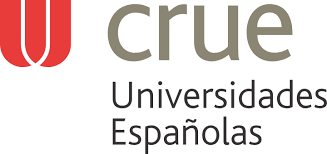Relación entre empatía, compasión y Burnout en estudiantes de medicina, residentes y profesionales médicos de Medellín
DOI:
https://doi.org/10.22335/rlct.v14i3.1644Palabras clave:
empatía, Burnout, compasión, médicos, estudiantes de medicinaResumen
Los médicos están expuestos a altos niveles de presión laboral, lo que conduce a un mayor riesgo de Burnout. La empatía es el reconocimiento cognitivo y afectivo del estado de ánimo y situación de una persona. La compasión es una respuesta al reconocimiento del sufrimiento del paciente y al deseo de reducirlo. Objetivos: explorar la relación entre empatía, compasión y Burnout en estudiantes y profesionales médicos y otras variables relacionadas con el síndrome. Método: 143 médicos y estudiantes respondieron un cuestionario sociodemográfico, el MBI, el TECA y la Escala de Compromiso y Acción Compasivos. Resultados: el 41,9 % mostró altos niveles de agotamiento emocional, el 21 % despersonalización y el 19,5 % bajos niveles de realización personal. Los niveles de Burnout se asociaron negativamente con la percepción de equilibrio entre la vida social, familiar y laboral, la compasión y la edad; F(5, 92) = 11,012, p < 0,00; (p < 0,05). La fatiga emocional interrumpió el desarrollo de comportamientos relacionados con la autocompasión y disminuyó la percepción de éxito. Conclusiones: para que los médicos tengan niveles óptimos de empatía afectiva y compasión, es fundamental el desarrollo de empatía cognitiva y habilidades de regulación emocional. Estos son factores protectores de Burnout.
Descargas
Referencias
Altman, T., y Roth, M. (2021). The risk of empathy: longitudinal associations between empathy and Burnout. Psychology & Health, 31 (12), 1441-1460. https://doi.org/ttps://doi.org/10.1080/08870446.2020.1838521
Buffone, A. E., Poulin, M., DeLury, S., Ministero, L., Morrisson, C., y Scalco, M. (2017). Don't walk in her shoes! Different forms of perspective taking affect stress physiology. Journal of Experimental Social Psychology, 72, 161-168. https://doi.org/https://doi.org/10.1016/j.jesp.2017.04.001
Cameron, R. A., Mazer, B. L., DeLuca, J. M., Mohile, S. G., y Epstein, R. M. (2015). In search of compassion: A new taxonomy of compassionate physician behaviours. Health Expectations: An International Journal of Public Participation in Health Care & Health Policy, 18(5), 1672-1685. https://doi.org/10.1111/hex.12160
Carlin, M., y Garcés de los Fayos Ruiz, E. J. (2010). El síndrome de Burnout: Evolución histórica desde el contexto laboral al ámbito deportivo. Anales de Psicología, 26(1), 169-180.
Davalos-Batallas, V., Vargas-Martínez, A. M., Bonilla-Sierra, P., León-Larios, F., Lomas-Campos, M. D., Vaca-Gallegos, S. L., y de Diego-Cordero, R. (2020). Compassionate Engagement and Action in the Education for Health Care Professions: A Cross-Sectional Study at an Ecuadorian University. International Journal of Enviromental Research and Public Health, 17(15): 5425. https://doi.org/10.3390/ijerph17155425
Delgado, S., González, D., y Tejero, R. (2014). El burNout como forma de estrés laboral y su dimensión forense. Revista cubana de salud y trabajo, 14(1), 51-66.
Figley, C. (2002). Compassion fatigue: Psychotherapists' chronic lack of self care. J. Clin. Psychol., 58(11), 1433-1441. https://doi.org/10.1002/jclp.10090
Gil-Monte, P. (2001). El síndrome de quemarse por el trabajo (síndrome de Burnout): aproximaciones teóricas para su explicación y recomendaciones para la intervención. Revista PsicologiaCientifica.com, 3(5).
Grau, A., Flichtentrei, D., Suñer, R., Prats, M., y Braga, F. (2009). Influencia de factores personales, profesionales y transnacionales en el síndrome de Burnout en personal sanitario hispanoamericano y español. Revista Española de Salud Pública, 83(2), 215-230.
Guevara, C., Henao, D., y Herrera, J. (2004). Síndrome de desgaste profesional en médicos internos y residentes. Hospital Universitario del Valle, Cali. Colombia Médica, 35(4), 173-178.
Halbesleben, J., y Rathert, C. (2008). Linking physician Burnout and patient outcomes: exploring the dyadic relationship between physicians and patients. Health Care Manage Rev., 33(1), 29-39. https://doi.org/10.1097/01.HMR.0000304493.87898.72
Hernández, R., Fernández, C., y Baptista, P. (2014). Metodología de la investigación (6.a ed.). McGraw-Hill.
Kamal, A., Bull, J. H., Wolf, S. P., Swetz, K. M., Shanafelt, T. D., Ast, K., Kavalieratos, D., y Sinclair, C. T. (2020). Prevalence and Predictors of Burnout Among Hospice and Palliative Care Clinicians in the U.S. Journal of Pain and Symptom Management, 59(5), 6-13. https://doi.org/10.1016/j.jpainsymman.2015.10.020
Kroll, H., Macaulay, T., y Jesse, M. (2016). A Preliminary Survey Examining Predictors of Burnout in Pain Medicine Physicians in the United States. Pain Physician, 19(5), 689-696.
Lamothe, M., Boujut, E., Zenasni, F., y Sultan, S. (2014). To be or not to be empathic: the combined role of empathic concern and perspective taking in understanding Burnout in general practice. BMC Family Practice, 15. https://doi.org/10.1186/1471-2296-15-15
López-Pérez, B., Fernández-Pinto, I., y Abad, F. J. (2008). TECA. Test de Empatía Cognitiva y Afectiva. Tea Ediciones, S.A
Maslach, C., y Jackson, S. E. (1981). MBI: Maslach Burnout inventory. University of California, Consulting Psychologists Press.
Montero Yaya, K. L., Cortés Olarte, G. A., y Hernández González, Á. U. (2020). Síndrome del Burnout en policías de Colombia y su relación con el sistema de beneficios e incentivos. Revista Logos Ciencia & Tecnología, 12(2), 32-43. https://doi.org/10.22335/rlct.v12i2.1161
O'Donnell, E. P., Humeniuk, K., West, C. P., y Tilburt, J. C. (2015). The effects of fatigue and dissatisfaction on how physicians perceive their social responsibilities. Mayo Clinic Proceedings, 90(2), 194-201. https://doi.org/10.1016/j.mayocp.2014.12.011
Ortega Ruiz, C., y López Ríos, F. (2004). Burnout o síndrome de estar quemado en los profesionales sanitarios: revisión y perspectivas. International Journal of Clinical And Health Psychology, 4(1), 137-160.
Picard, J., Catu-Pinault, A., Boujut, E., Botella, M., Jaury, P., y Zenasni, F. (2016). Burnout, empathy and their relationships: a qualitative study with residents in General Medicine. Psychology, Health & Medicine, 21(3), 354-361. https://doi.org/10.1080/13548506.2015.1054407
Reinolds, M., McCombie, A., Jeffery, M., Mulder, R., y Frizelle, F. (2021). Impact of Burnout on empathy. The New Zeland Medical Journal, 134 (1530), 12-20.
Rubio, J. C. (2003). Fuentes de estrés, Síndrome de Burnout y actitudes disfuncionales en orientadores de institutos de enseñanza secundaria [tesis doctoral, Universidad de Extremadura]. Repositorio institucional UNEX. https://dialnet.unirioja.es/servlet/oaites?codigo=1494
Sinclair, S., Norris, J. M., McConnell, S. J., Chochinov, H. M., Hack, T., Hagen, N., McClement, S., y Bouchal, S. (2016). Compassion: a scoping review of the healthcare literature. BMC Palliative Care, 15. https://doi.org/10.1186/s12904-016-0080-0
Stosic, M. D., Blanch-Hartigan, D., Aleksanyan, T., Duenas, J. y Ruben, M. A. (2022). Empathy, friend or foe? Untangling the relationship between empathy and Burnout in helping professions. The Journal of Social Psychology, 162(1), 89-108. https://doi.org/10.1080/00224545.2021.1991259
von Harscher, H., Dasmarais, N., Dollinger, R., Grossman, S., y Aldana, S. (2018). The impact of empathy on Burnout in medical students: new findings. Psychol Health Med., 23(3), 295-303. https://doi.org/10.1080/13548506.2017.1374545
Wilkinson, H., Whittington, R., Perry, L., y Eames, C. (2017). Examining the relationship between Burnout and empathy in healthcare professionals: A systematic review. Burnout Research, 6, 18-29. https://doi.org/10.1016/j.burn.2017.06.003
Williams, E. S., Manwell, L., Konrad, T. R., y Linzer, M. (2007). The relationship of organizational culture, stress, satisfaction, and Burnout with physician-reported error and suboptimal patient care: results from the MEMO study. Health Care Manage Rev., 32(3), 203-212. https://doi.org/10.1097/01.HMR.0000281626.28363.59
Yu, J., y Kirk, M. (2009). Evaluation of empathy measurement tools in nursing Systematic review. Journal of Advanced Nursing, 65(9), 1790-1806. https://doi.org/10.1111/j.1365-2648.2009.05071.x
Yue, Z., Qin, Y., Li, Y., Wang, J., Nicholas, S., Maitland, E., y Liu, C. (2022). Empathy and Burnout in medical staff: mediating role of job satisfaction and job commitment. BMC public health, 22(1), 1-13. https://doi.org/10.1186/s12889-022-13405-4
Zenasni, F., Boujut, E., Woerner, A., y Sultan, S. (2012). Burnout and empathy in primary care: Three hypotheses. British Journal of General Practice, 62(600), 346-347. https://doi.org/10.3399/bjgp12X652193
Publicado
Versiones
- 2022-12-10 (3)
- 2022-11-28 (2)
- 2022-10-10 (1)
Número
Sección
Licencia
Derechos de autor 2022 Revista Logos Ciencia & Tecnología

Esta obra está bajo una licencia internacional Creative Commons Atribución 4.0.
Esta revista provee acceso libre e inmediato a su contenido (https://creativecommons.org/licenses/by-nc-nd/4.0/), bajo el principio de hacer disponible gratuitamente la investigación al público y apoyar a un mayor intercambio de conocimiento global.
































